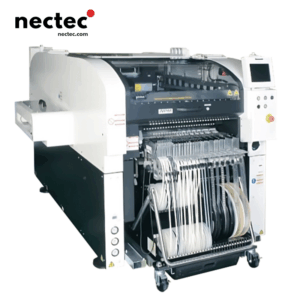In today’s fast-paced electronics manufacturing landscape, efficiency is key. With the rise of complex circuit designs and the need for rapid production, the importance of precision machinery has never been more pronounced. Among these technological advancements, Samsung’s Surface Mount Device (SMD) pick and place machines stand out as a cornerstone in ensuring high-quality assembly while maintaining a competitive edge. In this article, we will delve into the features, advantages, and impact of Máquinas de coleta e colocação de SMD da Samsung on manufacturing processes.
Entendendo as máquinas SMD Pick and Place
A pick and place machine is an automatic machine used to precisely place components onto PCB (Printed Circuit Board) surfaces. These machines are pivotal in optimizing the assembly process for electronic devices. Samsung’s SMD pick and place machines are equipped with advanced technology that allows for high-speed placement of components, making them a preferred choice in various production environments.
Principais recursos das máquinas SMD Pick and Place da Samsung
Samsung’s line of SMD pick and place machines offers a host of features that set them apart from competitors:
- Operação em alta velocidade: With the ability to place thousands of components per hour, Samsung machines significantly reduce production time.
- Posicionamento de precisão: These machines utilize advanced vision systems to ensure components are placed accurately, minimizing errors and waste.
- Manuseio flexível: Capable of handling various components, including THT and SMD, these machines adapt to diverse manufacturing needs.
- Interface amigável ao usuário: The software design is intuitive, allowing operators to easily program and adjust settings for different production runs.
- Escalabilidade: Suitable for both small-scale and mass production, they can be integrated into production lines of varying sizes.
The Advantages of Using Samsung SMD Machines
Investing in Samsung’s SMD pick and place machines can offer numerous advantages to manufacturers:
1. Velocidade de produção aprimorada
The most immediate benefit is the acceleration of the production process. Speed is critical in manufacturing to meet tight deadlines and customer demands. Samsung machines are designed to offer remarkable output without sacrificing quality.
2. Custo-efetividade
By minimizing errors through precision placement, companies can significantly reduce the costs associated with rework and product failure. Furthermore, enhancing speed contributes to reduced labor costs, making production more economical.
3. Melhoria do controle de qualidade
With integrated quality control features, such as automatic component verification and real-time monitoring, the consistency of the output is improved. This reliability is essential in maintaining a good reputation for product quality in a competitive market.
4. Maior flexibilidade
One of the hallmarks of Máquinas de coleta e colocação de SMD da Samsung is their ability to handle a variety of component types and sizes. This flexibility allows manufacturers to pivot quickly to new projects or adapt to changing market demands without needing to invest in entirely new machinery.
Aplicações na fabricação de eletrônicos
Samsung SMD pick and place machines cater to a diverse range of applications across various sectors:
1. Eletrônicos de consumo
Devices such as smartphones, tablets, and gaming consoles all rely heavily on these machines for efficient and precise assembly of electronic components.
2. Setor automotivo
With the increasing integration of electronics in vehicles, including navigation systems and safety features, the demand for precise manufacturing solutions like Samsung’s machines is on the rise.
3. Equipamentos industriais
Automating the assembly of industrial machinery components ensures reliability and efficiency, which are critical for operation in harsh environments.
Technological Innovations in Samsung SMD Machines
Samsung continues to innovate within the field of pick and place technology, integrating cutting-edge solutions to enhance efficiency further:
1. IA e aprendizado de máquina
By incorporating AI, Samsung machines can learn from data over time, optimizing their processes for even faster and more accurate production.
2. Conectividade de IoT
Internet of Things (IoT) capabilities enable seamless communication between machines on a production floor. This connectivity drives efficiency by facilitating real-time data sharing and machine monitoring.
3. Sistemas avançados de visão
Sophisticated camera technologies provide enhanced visual recognition and alignment of components, minimizing placement errors significantly.
Desafios e considerações
While Samsung SMD pick and place machines offer numerous benefits, it’s essential to be aware of potential challenges:
- Investimento inicial: The upfront costs for top-tier machines can be substantial, requiring a careful analysis of ROI.
- Necessidades de manutenção: Regular maintenance is crucial to ensure optimal operation and longevity of the machines.
- Requisitos de treinamento: Employees may need extensive training to operate sophisticated machinery and leverage its full capabilities.
Tendências futuras da tecnologia Pick and Place
As technology progresses, the future of pick and place machines continues to evolve:
1. Automação e robótica
With the automation of more manufacturing processes, the role of pick and place machines is expected to expand, leading to increased efficiency and reduced human error.
2. Iniciativas de sustentabilidade
As companies move towards more sustainable practices, the efficiency and waste reduction offered by advanced SMD machines will play a crucial role in greener manufacturing.
3. Recursos de personalização
Future machines may offer even more customization options, allowing manufacturers to easily switch between different component types and sizes without extensive reconfiguration.
In summary, Samsung SMD pick and place machines represent a crucial investment for manufacturers striving for efficiency, precision, and quality in their production processes. As technology evolves, these machines will continue to play an essential role in the ongoing transformation of the electronics manufacturing industry.






